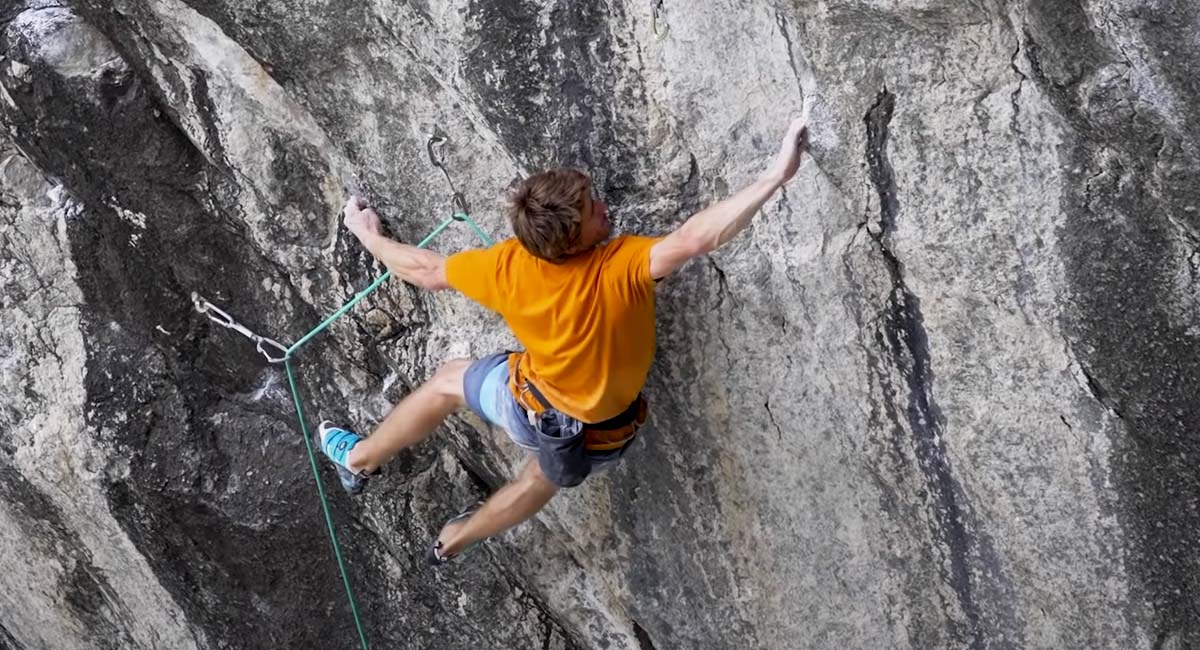VIDEO: Seb Bouin: Want to Send Your 5.15d Project? Practice Sending Something Easier.


Looking back, one avoidable mistake I made as a younger climber was to pursue long-term projects at the expense of short-term ones. Essentially, I built an hourglass-shaped tick-list each year: I’d send numerous climbs in my warm-up grades and then—during lucky years—a few harder projects that required months or even seasons of toiling. But between those extremes was a gap. And in that gap were the routes I was physically strong enough to do but which nonetheless required dialing in the right beta, trying really hard, and risking failure.
I made this mistake for a number of complicated reasons, one of them being that I was a shy kid who wanted to climb “hard” routes so people would think I was worth talking to. But the effect on my climbing was simple: I got stronger, but I never really got good at executing. I’d get incredibly nervous before send-attempts. I’d grow moody as the end of the season grew closer, afraid that I’d be unable to bag my project before the snow or the heat. And these nerves and moods, rather than helping me up the wall, scuttled my climbing and helped ensure failure.
The lesson that I eventually learned? I needed to practice sending.
This is the subtle moral of EpicTV’s recent short featuring Seb Bouin (see video below).
Here Bouin, who has sent 9b+ (5.15c) and is currently sieging two 9c’s (5.15d), gives himself two days to send a technical granite 9a (5.14d) near Briançon, in the Haute-Alps in southeastern France. The route, Crotte De Geek, is well within his abilities; he knows he can do it; but it’s hard enough that he has to do everything right if he wants to send it in the time he’s allotted.
Trying hard routes that are well below your absolute maximum level—routes that if you perform well and get lucky you can finish in a day or two—replicates the longer project cycle in a compressed time period, simulating the mental and emotional components of redpointing. Yet it’s important to be realistic about your expectations—and to pick the right route. Just because you’ve sent a 5.13b after one full season of work doesn’t mean that bumping down to 5.12c for a weekend project is necessarily realistic—though it might be.
As Bouin notes in the short film, there four other factors in addition to the grade that influence how hard a route is to complete, and you should factor those into your calculations when selecting a mini-proj:
The nature of the route, and whether or not it fits your style: We might wish we were all perfectly well rounded, but we’re not. (Put me on a granite slab and you can take about five number grades off of my peak redpoint abilities.) And it’s worth being honest about this is if you’re trying to do what Bouin’s doing. If it’s a hard style for you, either give yourself more time, pick something easier, or be aware that you might fail. In Bouin’s case, Crotte De Geek is quite tricky, with some finicky beta, which makes finding success harder than it might have been on a more straightforward limestone cave route. (Does he send? Watch the video.)
Your current fitness: “Your shape,” as Bouin calls it, also plays a role. Our past successes are less indicative of future performance than we tend to think; rather than evaluating your two-day redpoint max based upon the hardest thing you did last year, base it on how you’ve been climbing recently.
Conditions: Alexander Megos once famously said “There’s no bad conditions; there’s only weakness.” But realistically, conditions play a definite role in climbing. And as Bouin notes, “If I have only two days, it’s a bit game changing whether you have good conditions or not. Because you are not so clear on the route and you are still making some mistakes.” Be fair to yourself. Some excuses are realistic.
This article is free. Sign up with a Climbing membership, now just $2 a month for a limited time, and you get unlimited access to thousands of stories and articles by world-class authors on climbing.com plus a print subscription to Climbing and our annual coffee-table edition of Ascent. Please join the Climbing team today.